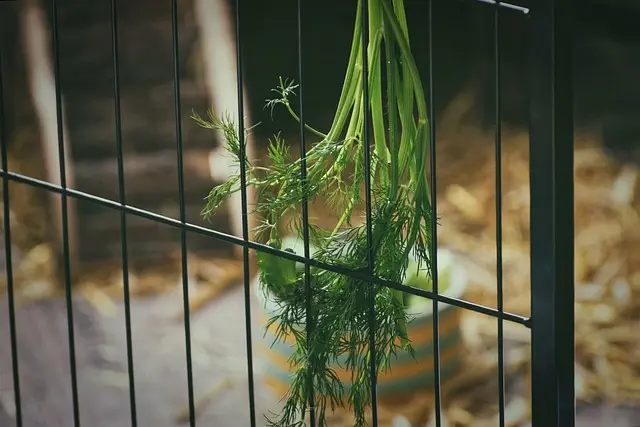Kratom, a Southeast Asian plant, has gained popularity for its potential to enhance endurance performance through its active compounds, mitragynine and 7-hydroxymitragynine. The 'best way to make kratom tea' is emphasized as a preferred consumption method for controlled dosing, with Maeng Da and White Vein Kratom strains being particularly beneficial for athletes due to their stimulating effects that can bolster energy and focus during endurance training. Precision in preparing this tea—using fresh leaves or powder, simmering for 10-15 minutes, steeping for an additional 15 minutes post-simmering, straining, and allowing it to cool—is crucial for maximizing bioavailability and effectiveness. Athletes are advised to start with a modest dose to understand personal sensitivity, adjust incrementally, and integrate kratom responsibly within a comprehensive training regimen that includes proper nutrition, hydration, and recovery. Safety, consistency, and professional guidance are key when incorporating kratom tea into an endurance training routine, as it should complement—not replace—other aspects of fitness and health. Always consult with healthcare professionals or fitness experts to ensure its use aligns with personal well-being and training goals, adhering to legal regulations and the American Kratom Association's safe consumption practices.
Exploring the intersection of natural supplements and athletic performance, this article delves into how kratom can be a valuable addition to endurance training regimens. We will dissect the science behind kratom’s impact on stamina, guide you through selecting the most beneficial strains for your fitness goals, and provide a detailed ‘best way to make kratom tea.’ Learn how to seamlessly incorporate this brew into your training while adhering to safety guidelines for optimal performance enhancement. This comprehensive overview aims to enlighten athletes on the potential of kratom as an endurance booster, with a focus on responsible use and integration into their routine.
- Understanding Kratom and Its Impact on Endurance Training
- The Optimal Kratom Strain Selection for Enhanced Stamina
- Perfecting the Best Way to Make Kratom Tea: A Step-by-Step Guide
- Integrating Kratom Tea into Your Endurance Training Regimen
- Safety Considerations and Responsible Use of Kratom in Athletic Performance
Understanding Kratom and Its Impact on Endurance Training

Kratom, a tropical evergreen tree native to Southeast Asia, has garnered attention in various health and fitness circles for its potential ergogenic properties. When considering endurance training, the active compounds found in kratom leaves, namely mitragynine and 7-hydroxymitragynine, may play a role in enhancing physical performance and stamina. Regular users often report increased energy levels and reduced fatigue, which can be beneficial for those looking to push their endurance limits. Incorporating kratom into a training regimen could potentially lead to improved endurance outcomes. However, it is crucial to approach its use with caution; understanding the appropriate dosage and the right strain for your specific fitness goals is paramount. The best way to make kratom tea, a popular method of consumption due to its gentler effects compared to capsules or powders, involves simmering the leaves in water to release the active alkaloids. This method not only preserves the compounds but also allows for a more controlled intake. Athletes and fitness enthusiasts who opt for this approach should pay close attention to how their bodies respond, as individual sensitivity to kratom can vary significantly. Proper hydration and nutrition remain foundational to endurance training, and while kratom may offer additional support, it should complement a well-rounded training program that includes strength, flexibility, and recovery practices.
The Optimal Kratom Strain Selection for Enhanced Stamina

When aiming to improve endurance through kratom training, selecting the optimal strain is a critical step. Mitragyna speciosa, commonly known as kratom, contains alkaloids that can influence energy levels and stamina. For those looking to enhance their physical capabilities, strains with stimulating effects are typically preferred. Maeng Da Kratom is renowned for its balanced alkaloid profile, offering both energy and focus without the sedative properties associated with higher doses or less active strains. Users often report that this strain can help push through fatigue and maintain a consistent level of performance during prolonged activities. Another popular choice is White Vein Kratom, which is prized for its uplifting and invigorating effects. The best way to make kratom tea with these strains involves precise measurement of the leaf dose, optimal water temperature, and steeping time to extract the desired alkaloids effectively. This method allows for a controlled dosage and a palatable way to consume kratom, which some users find more comfortable than capsules or powders. When preparing kratom tea for endurance improvement, it’s important to start with a lower dose to assess individual sensitivity and gradually adjust according to personal tolerance and the desired effect. Regularity in consumption and careful strain selection can contribute to sustained energy levels and improved athletic performance, making kratom an intriguing addition to an endurance training regimen when used responsibly and in conjunction with proper training and nutrition.
Perfecting the Best Way to Make Kratom Tea: A Step-by-Step Guide

When incorporating kratom into a training regimen aimed at enhancing endurance, preparing it correctly is paramount. One of the most popular and effective methods is through kratom tea, which can be meticulously crafted to ensure optimal bioavailability and effects. To achieve the best way to make kratom tea, one must follow a precise process that honors the potency and purity of the kratom leaves.
Begin by selecting high-quality, fresh kratom leaves or powder, as the quality of your tea directly correlates with the grade of the kratom used. For every 8 ounces of water, measure out approximately 3 to 5 grams of kratom powder, depending on your preferred strength and tolerance level. Bring the water to a gentle boil, then reduce it to a simmer. Add the kratom powder slowly, stirring continuously to prevent clumping. Maintain the simmer for a period of 10 to 15 minutes; this allows the active alkaloids in the kratom to infuse fully into the water. After simmering, let the tea steep for an additional 15 minutes off the heat. This step is crucial as it extracts more of the desirable compounds without over-extraction, which can lead to a loss of potency. Strain the tea through a fine sieve or cheesecloth into a clean container, pressing out as much liquid as possible to ensure you’re not left with any valuable alkaloids behind. Consume the tea once it has reached a safe and comfortable temperature for ingestion. Remember to adjust the dosage and brewing time according to individual sensitivity and the desired effects. Consistency in preparation will yield the most reliable and reproducible results, contributing significantly to your endurance training and overall well-being.
Integrating Kratom Tea into Your Endurance Training Regimen

Integrating Kratom Tea into Your Endurance Training Regimen can be a strategic approach for athletes seeking to enhance their performance and durability. Kratom, derived from the leaves of Mitragyna speciosa, has been traditionally used in Southeast Asia for its energizing and pain-relieving properties. When considering the best way to make Kratom tea, it’s crucial to adhere to precise preparation methods to maximize efficacy and safety. A common method involves simmering dried Kratom leaves or powder in water for about 20 minutes, which helps to extract the alkaloids present in the leaves effectively. This tea can then be sipped throughout the day as part of your endurance training routine. It’s advisable to start with a lower dose and gradually increase it under expert guidance, as individual sensitivity to Kratom can vary.
For athletes looking to incorporate Kratom into their regimen, it’s important to time the consumption carefully. Kratom’s effects can range from stimulating to sedating depending on the dosage and strain used. Typically, a lower dose can provide a stimulant effect, which may help in increasing endurance by reducing fatigue during long training sessions. In contrast, a higher dose might have a more calming effect, which could be beneficial for recovery days. It’s also essential to maintain proper hydration and ensure that Kratom is used as part of a balanced training program that includes adequate nutrition, rest, and recovery. Consulting with a healthcare professional or a trained fitness expert is recommended before integrating Kratom tea into your endurance training regimen to ensure it aligns with your overall health and fitness goals.
Safety Considerations and Responsible Use of Kratom in Athletic Performance

When integrating kratom into an endurance training regimen, it is paramount to approach its use with caution and consideration for safety. Kratom, derived from the leaves of Mitragyna speciosa, has been traditionally used in certain cultures for its stimulating or sedative effects. However, its inclusion in an athletic context necessitates a thorough understanding of its pharmacological properties and potential interactions with other substances. Athletes considering kratom as part of their endurance improvement strategy should be aware that the best way to make kratom tea involves precise dosing and preparation to mitigate risks and optimize effects. The American Kratom Association and similar organizations provide guidelines for safe consumption, emphasizing the importance of using kratom responsibly. It is essential to start with a low dose to gauge individual tolerance, as kratom’s impact can vary widely between individuals. Additionally, consistent monitoring of one’s response to kratom is crucial, as it may affect mood, alertness, and physical performance. Proper hydration, nutrition, and rest remain foundational to endurance training, and kratom should be viewed as a supplementary tool rather than a primary solution for performance enhancement. Adhering to legal regulations and consulting with healthcare professionals are also critical steps in the responsible use of kratom, ensuring that athletes can train safely and effectively to achieve their endurance goals.
Incorporating kratom into an endurance training regimen can potentially offer a unique advantage for athletes seeking to enhance their performance and stamina. This article has delved into the multifaceted role of kratom, guiding readers through understanding its effects on endurance, selecting the most suitable strains for their goals, and mastering the art of brewing the best kratom tea. By adhering to these guidelines and practicing responsible use, athletes can safely explore this method as a complementary practice within their fitness routines. As with any training regimen, consistent effort and careful monitoring are key to achieving optimal results. For those interested in experimenting with kratom for endurance improvement, the outlined steps provide a clear and effective approach.






